Spinal Stenosis Relief, Spinal stenosis is a medical condition where the spinal canal narrows, putting pressure on the nerves and spinal cord. This narrowing can lead to symptoms such as pain, tingling, numbness, or weakness especially in the lower back and legs. While this condition is often associated with aging, it can significantly impact quality of life if not managed properly.
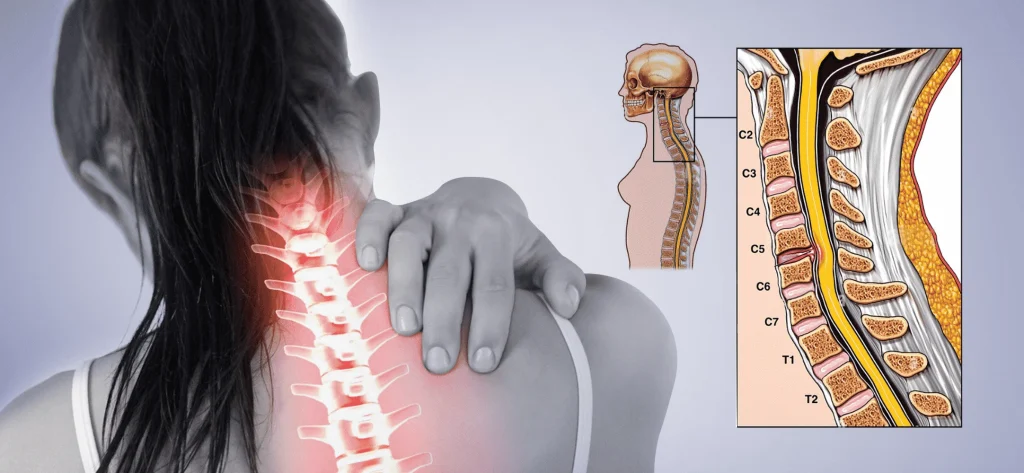
Traditional medical treatments include medications, physical therapy, and even surgery in severe cases. However, many people explore natural remedies as part of a holistic approach to ease symptoms and improve mobility. These alternative treatments often focus on reducing inflammation, improving posture, and enhancing overall well-being.
In this comprehensive guide, we’ll explore Spinal Stenosis Relief that may help you manage discomfort, increase flexibility, and support a healthy spine without relying solely on pharmaceuticals or invasive procedures.
What is Spinal Stenosis?
Spinal Stenosis Relief is a condition in which the spaces within your spine narrow, placing pressure on the spinal cord and surrounding nerves. This often results from age-related changes such as osteoarthritis, herniated discs, or the formation of bone spurs.
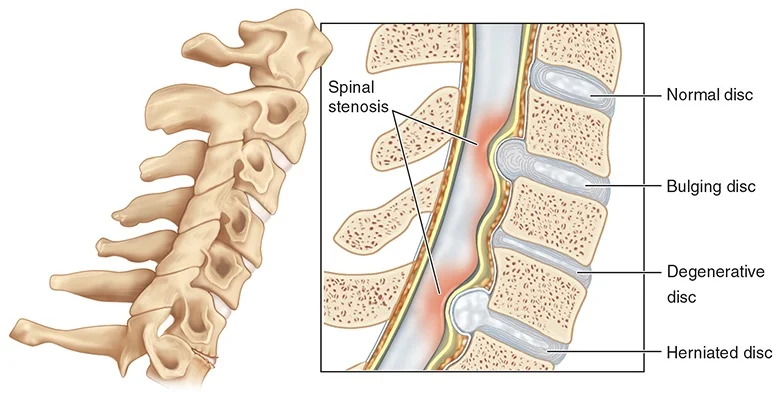
Common Symptoms Include:
- Persistent pain in the lower back or neck
- Numbness or tingling in the arms, hands, legs, or feet
- Muscle weakness or cramping
- Difficulty walking or maintaining balance
- Pain that intensifies while standing or walking for extended periods and improves when sitting or leaning forward
While spinal stenosis is often a progressive condition, its symptoms can be effectively managed, especially when identified early. A combination of lifestyle changes, natural therapies, and medical treatments can significantly improve comfort and mobility.
Why Consider Natural Remedies?
Spinal Stenosis Relief, Many individuals with spinal stenosis explore natural remedies as part of their pain management and wellness strategy. These approaches offer several advantages, especially for those seeking non-invasive solutions.
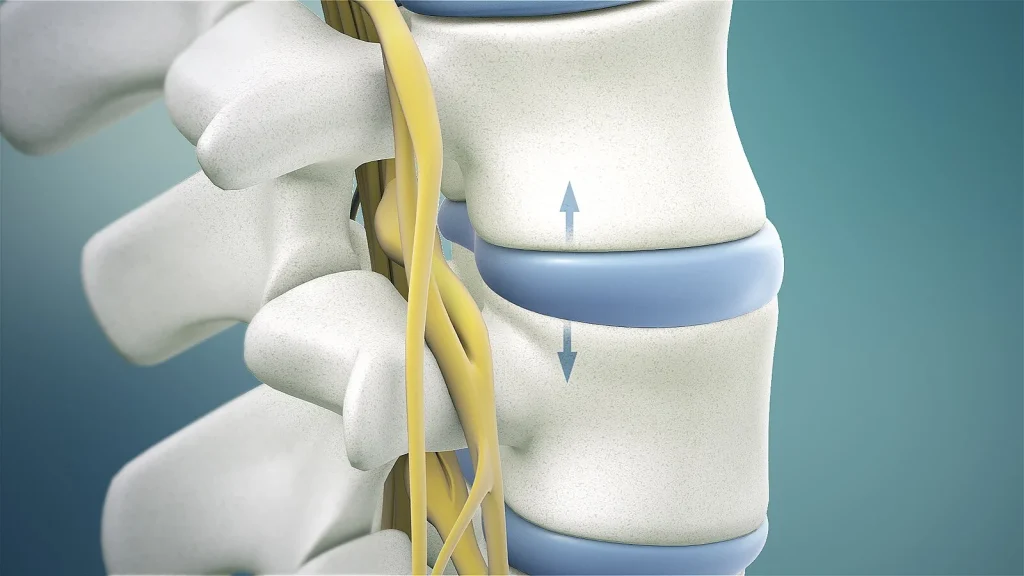
Key Benefits of Natural Treatments:
- Fewer Side Effects: Unlike some medications particularly opioids natural options typically carry a lower risk of dependency, gastrointestinal issues, or other adverse effects.
- Whole-Body Wellness: Natural therapies often focus on lifestyle improvements, addressing the root causes of discomfort while promoting overall physical and mental health.
- Non-Invasive Options: Ideal for those who wish to avoid or postpone surgery, natural remedies provide conservative relief without the need for surgical intervention.
- Cost-Effective: Compared to ongoing medical procedures or surgery, natural treatments are generally more budget-friendly and accessible.
While natural remedies may not cure spinal stenosis, they can offer substantial relief, reduce symptom severity, and enhance daily quality of life especially when used as part of a well-rounded care plan.
Top Natural Remedies for Spinal Stenosis
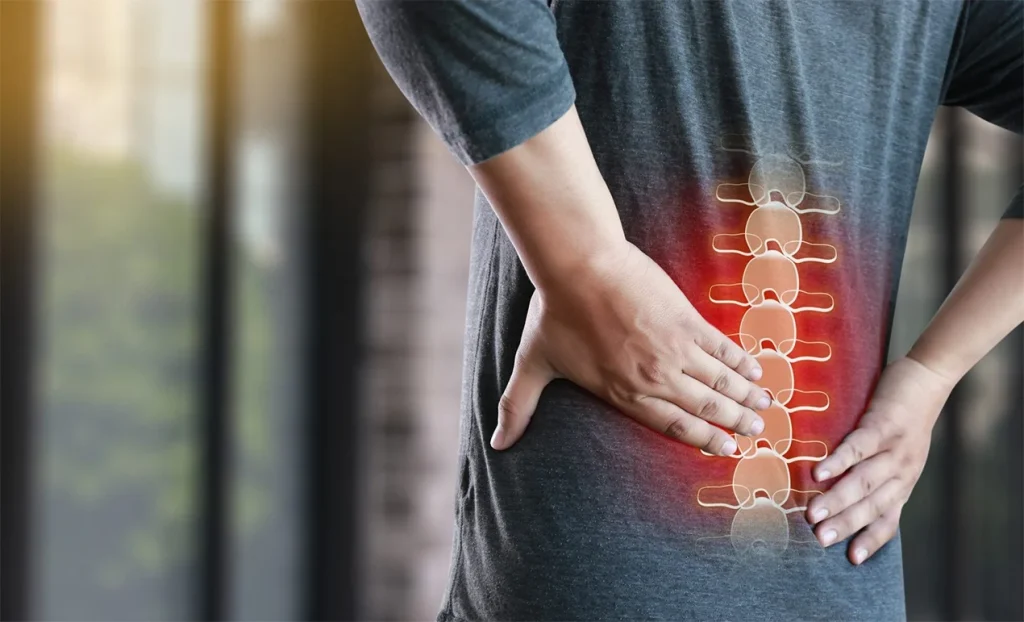
1. Physical Therapy & Gentle Exercises
Benefits:
- Enhances flexibility and posture
- Strengthens core and supporting back muscles
- Boosts blood circulation and reduces joint stiffness
Effective Exercises:
- Pelvic Tilts: Help relieve lower back pressure by engaging the abdominal muscles.
- Knee-to-Chest Stretches: Improve spinal flexibility and reduce discomfort.
- Water Aerobics: Low-impact movements in water minimize strain on the spine while promoting full-body conditioning.
Pro Tip: Begin with low-intensity movements and gradually increase intensity under the guidance of a licensed physical therapist to avoid injury and ensure proper technique.
2. Anti-Inflammatory Diet
Chronic inflammation is a major contributor to spinal discomfort and stiffness. Adopting an anti-inflammatory diet can play a key role in managing pain and promoting spinal health.
Foods to Include:
- Leafy Greens: Such as spinach and kale, rich in antioxidants and vitamins.
- Berries: Blueberries, strawberries, and raspberries help combat oxidative stress.
- Fatty Fish: Salmon, sardines, and mackerel provide omega-3 fatty acids that fight inflammation.
- Nuts & Seeds: Almonds, walnuts, flaxseeds, and chia seeds offer healthy fats and fiber.
- Olive Oil: A heart-healthy fat with proven anti-inflammatory properties.
Foods to Avoid:
- Highly Processed Foods: Packaged snacks, fast food, and refined carbs.
- Added Sugars: Especially in soft drinks, sweets, and baked goods.
- Trans Fats: Found in hydrogenated oils and some baked/processed foods.
Key Insight:
Turmeric, especially its active compound, curcumin is a powerful natural anti-inflammatory. Incorporating it into your meals or as a supplement may offer additional relief from spinal inflammation.
3. Acupuncture
Rooted in traditional Chinese medicine, acupuncture involves the insertion of fine, sterile needles into targeted points on the body to promote healing and balance.
How It Helps:
- Stimulates Endorphin Release: Natural pain-relieving chemicals that help ease chronic discomfort.
- Enhances Blood Circulation: Encourages better oxygen and nutrient delivery to affected areas.
- Reduces Muscle Tension: Helps relax tight muscles and relieve pressure around the spine.
Important Note:
For safety and effectiveness, always seek treatment from a licensed and certified acupuncturist with experience in managing spinal conditions.
4. Chiropractic Care
Chiropractic care focuses on spinal alignment through manual adjustments, aiming to reduce nerve pressure and improve overall spinal function.
Conditions It May Help:
- Lumbar Spinal Stenosis: Adjustments may help relieve nerve compression and associated lower back pain.
- Degenerative Disc Disease: Can potentially improve mobility and alleviate discomfort caused by disc degeneration.
Cautionary Note:
Chiropractic care isn’t suitable for everyone, especially those with severe osteoporosis, spinal fractures, or certain neurological conditions. Always consult your primary care physician or spine specialist before starting treatment.
5. Herbal Supplements
Herbal supplements offer a natural approach to managing inflammation and discomfort associated with spinal conditions. Many herbs have been traditionally used for their anti-inflammatory and analgesic (pain-relieving) properties.
Popular Options:
- Turmeric (Curcumin): A potent anti-inflammatory compound that may help reduce swelling and stiffness.
- Devil’s Claw: Often used to alleviate lower back pain and improve mobility.
- Boswellia (Indian Frankincense): Supports joint function and may help reduce inflammation around spinal tissues.
Precautions:
- Consult Your Healthcare Provider: Especially important if you’re taking prescription medications or managing chronic health conditions.
- Watch for Side Effects: Monitor for allergic reactions, digestive issues, or potential interactions with other drugs or supplements.
6. Essential Oils
Essential oils, when applied topically, can offer natural relief by soothing muscle tension, calming inflammation, and easing spinal discomfort.
Recommended Oils:
- Lavender: Known for its calming properties, it helps reduce stress-related tension and mild pain.
- Peppermint: Contains menthol, which creates a cooling sensation and helps numb localized discomfort.
- Eucalyptus: Acts as a natural anti-inflammatory and may help ease muscle stiffness and joint pain.
How to Use:
Always dilute essential oils with a carrier oil (like coconut or jojoba oil) before applying to the skin. Gently massage the blend into affected areas for best results.
7. Yoga & Stretching
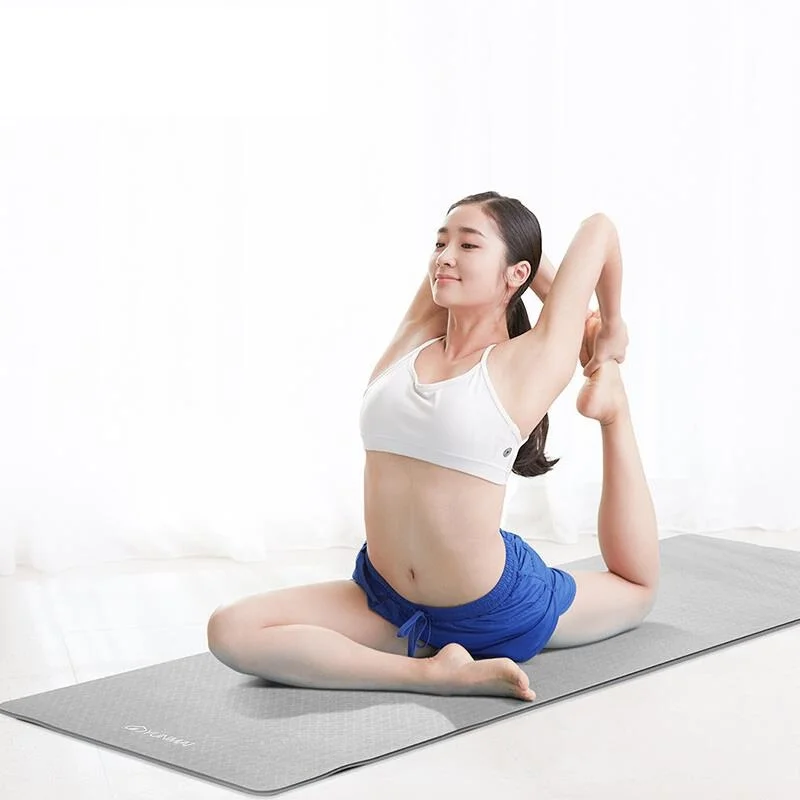
Gentle yoga and targeted stretching exercises can significantly relieve muscle tightness, enhance spinal flexibility, and promote better posture all of which are essential for managing spinal stenosis.
Helpful Poses:
- Child’s Pose: Gently stretches the lower back and hips while promoting relaxation.
- Cat-Cow Stretch: Improves spinal mobility and encourages fluid movement.
- Bridge Pose: Strengthens the lower back, glutes, and core muscles for better spinal support.
Safety Tip:
Never force a stretch or push through pain. Avoid any pose that causes discomfort or puts excessive strain on the spine. Listen to your body, and consider working with a certified yoga instructor experienced in spinal care.
8. Massage Therapy
Massage therapy is a natural and effective way to alleviate pain, reduce muscle tension, and enhance overall well-being for individuals with spinal stenosis.
Benefits of Massage:
- Increases Circulation: Improves blood flow to affected areas, aiding in healing.
- Releases Muscle Tension: Loosens tight muscles that may be compressing nerves.
- Promotes Relaxation: Helps reduce stress and improves sleep quality.
Popular Massage Techniques:
- Deep Tissue Massage: Targets deeper muscle layers to relieve chronic tension.
- Swedish Massage: Uses gentle, flowing strokes to relax the body and mind.
- Trigger Point Therapy: Focuses on specific knots or tight spots that cause referred pain.
Pro Tip:
Consistency is key. Regular massage sessions may provide cumulative relief and long-term improvements in mobility and pain management.
9. Mindfulness & Stress Reduction
Stress and anxiety can amplify the perception of pain, making it harder to manage spinal discomfort. Mindfulness practices can help calm the nervous system, enhance emotional well-being, and improve pain tolerance.
Effective Techniques:
- Meditation: Helps center your thoughts and reduces the emotional impact of chronic pain.
- Deep Breathing: Activates the body’s relaxation response, lowering stress hormones and muscle tension.
- Guided Visualization: Uses calming mental imagery to shift focus away from pain and promote healing.
Helpful Apps to Explore:
- Headspace
- Calm
- Insight Timer
Tip: Even 5–10 minutes a day of mindfulness can make a noticeable difference over time in how you feel and function.
10. Posture Correction & Ergonomic Support
Poor posture can increase pressure on the spine and worsen nerve compression, especially in individuals with spinal stenosis. Correcting posture and using ergonomic tools can minimize strain, improve alignment, and enhance daily comfort.
Posture Tips:
- Use Lumbar-Support Chairs: Maintain the spine’s natural curve while sitting.
- Avoid Slouching: Keep your shoulders relaxed and spine upright.
- Take Breaks Frequently: Stand up, stretch, or walk around every 30 minutes to relieve pressure.
Helpful Ergonomic Products:
- Ergonomic Seat Cushions: Provide better spine and hip alignment while sitting.
- Standing Desks: Alternate between sitting and standing to reduce spinal stress.
- Supportive Footwear: Proper arch support can improve posture and reduce lower back strain.
Quick Tip: Small adjustments in your workspace and daily habits can have a big impact on managing spinal discomfort over time.
When to Seek Medical Help
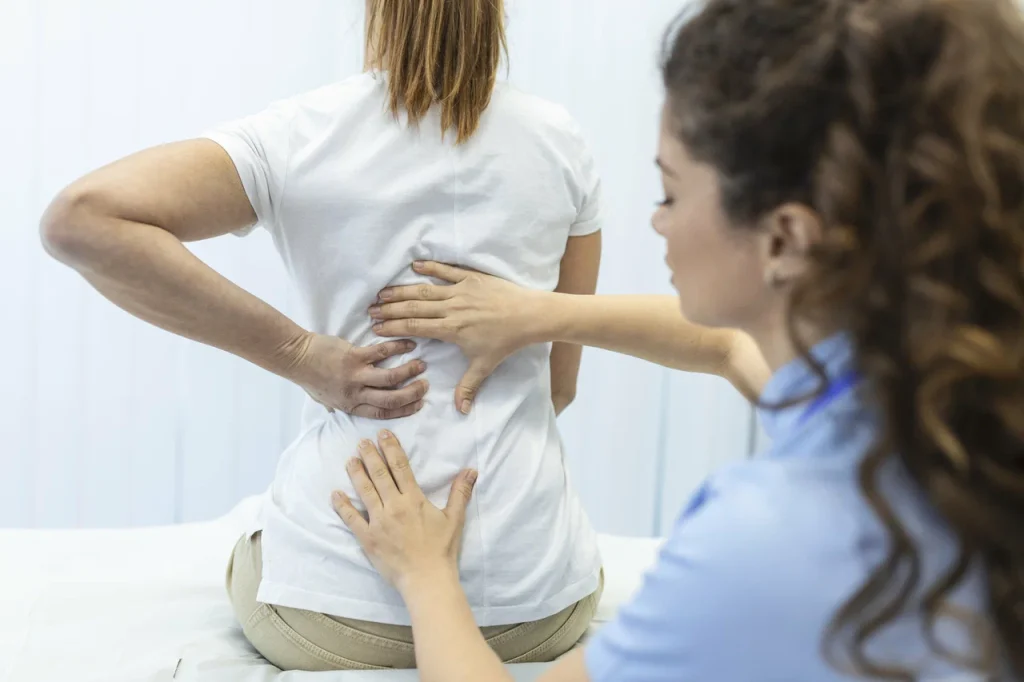
Spinal Stenosis Relief, While natural remedies and lifestyle changes can offer relief for many individuals, some symptoms may signal serious spinal nerve compression that requires immediate medical attention.
Seek prompt professional care if you experience:
- Loss of bowel or bladder control
- Severe or progressing numbness, weakness, or paralysis
- Rapid worsening of pain or mobility issues
- Inability to walk or stand without assistance
These signs may indicate conditions such as cauda equina syndrome or severe spinal cord compression, both of which are medical emergencies. Early intervention is crucial to prevent permanent damage.
Combining Natural and Medical Treatments
Spinal Stenosis Relief, For many individuals, the most effective approach to managing spinal stenosis is a holistic plan that blends natural therapies with conventional medical treatments. This integrative strategy can help reduce pain, improve mobility, and enhance overall quality of life.

Common Conventional Treatments:
- Prescription Pain Relievers: Useful for short-term relief during flare-ups.
- Cortisone Injections: Reduce inflammation and nerve irritation in targeted areas.
- Physical Therapy: Often prescribed alongside natural remedies for optimal recovery.
- Surgery: Reserved for severe cases where conservative treatments have not provided sufficient relief.
Pro Tip:
Collaborate with a multidisciplinary team including your primary care physician, physical therapist, and trusted alternative medicine providers to create a personalized treatment plan that supports your long-term health goals.
FAQs About Spinal Stenosis Relief
What is the best natural treatment for spinal stenosis?
There’s no one-size-fits-all solution, but many people benefit from a combination of gentle exercise, anti-inflammatory diets, and herbal supplements like turmeric or devil’s claw.
Can spinal stenosis go away naturally?
Spinal stenosis typically doesn’t reverse on its own. However, symptoms can be effectively managed and quality of life improved through spinal stenosis home remedies and lifestyle changes.
Is walking good for spinal stenosis?
Yes, low-impact walking can help maintain mobility and reduce stiffness. Just be sure to listen to your body and avoid overexertion.
What herbs are good for spinal stenosis?
Herbs like turmeric, Boswellia, and devil’s claw have anti-inflammatory properties and may offer symptom relief. Always consult a healthcare provider before starting any supplement.
How to manage spinal stenosis without surgery?
Use a holistic approach combining:
- Physical therapy
- Stretching and yoga
- Diet changes
- Acupuncture and chiropractic care
- Posture correction
Conclusion Spinal Stenosis Relief
Spinal stenosis can be a challenging condition, but there are many alternative treatments for spinal stenosis options beyond medication and surgery. From physical therapy and herbal remedies to posture correction and stress management, a holistic approach can make a significant difference.
Always consult with a healthcare provider before starting any natural treatment plan. By combining spinal stenosis treatment natural remedies with medical guidance, you can take proactive steps toward relief and a better quality of life.
Explore Nexus Globes for the latest news on tech, health, and entertainment.
Intermittent Fasting 101: Simple Tips for Real Results




